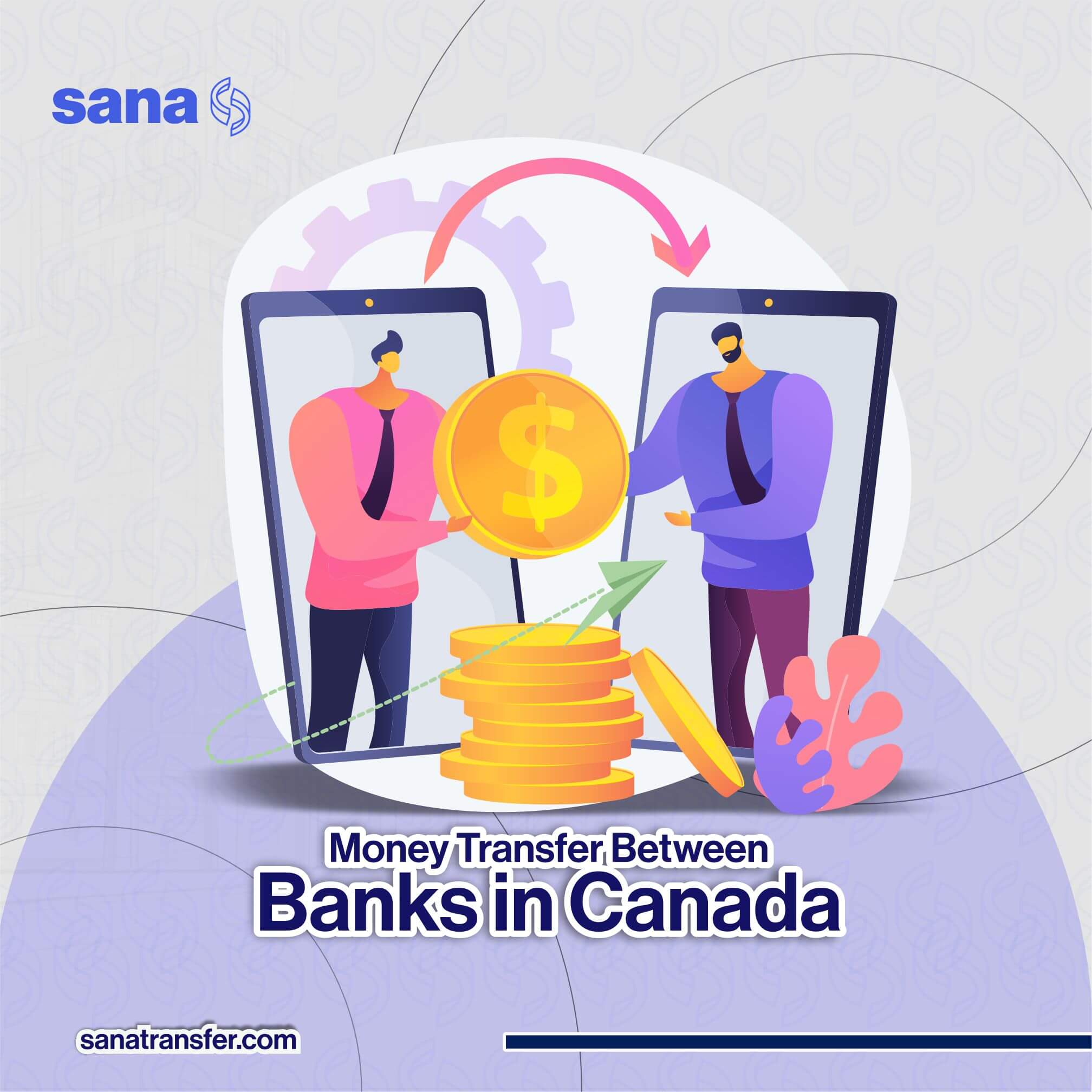How to Transfer Money Between Banks in Canada
Here is a step by step process on how to transfer money between banks in Canada.

Nowadays, most Canadians are slowly shifting away from cash as a method of payment. Essentially, technology has made it possible for Canadians to transfer money between different banks. With technology, you have access to easy transfer, which you can do on your smartphone from the convenience of your home. If you are new to the banking system and want to learn how to transfer money between banks in Canada, go through this guide.
How Does Bank-to-Bank Transfers Work
Most Canadian banks use the CDSX, which is the new clearing and settlement scheme for both debt and equity securities within Canada. The CDSX service is held by CDS (Clearing and Depository Services) Inc. and is used to process payments between banks. Here is how this service works:
1. Initiation
The sender starts by initiating a direct payment transfer or direct deposit via their bank. Subsequently, their bank processes the transaction by transferring a file to CDSX or directly contacting CDSX.
2. Notifying the parties involved in the process of their payment obligations
The CDSX will then transmit the payment obligations of the sending and receiving banks to each of them respectively. Bank personnel will have to settle these important obligations by sending payment transactions to the CDS through the Large-Value Transfer System (LVTS).
One role of the CDSX is that they maintain all securities possessed by Canadian banks in some restricted-access accounts. So while the transferring of funds is being executed by the banks, the CDS uses these banks' securities as collateral to make sure that the banks transfer the payments as pledged.
3. Settlement and release of funds
Once the CDS accepts the payment from the sending bank, it goes ahead to settle the transaction and then releases the bank’s securities which are being held as collateral. Subsequently, the receiving bank will then be able to accept the funds transferred.
4. Completion
The receiving bank will then have to complete the full transaction and then credit the intended receiver’s account.
Related Article - Bank of Montreal (BOM) - Everything You Need to Know
How Can I Transfer Money From One Bank to Another in Canada?
Want to learn how to transfer money between banks in Canada? It’s quite easy and straightforward. If you are doing a bank-to-bank transfer between the various accounts you have in your name, you have to start by setting up the transfer between your different accounts.
Follow the steps below to set up your bank-to-bank transfer:
1. Link the Two Accounts
The first step you have to take is to connect the sending and receiving bank accounts. To do this, you have to provide the receiving bank with the account number and routing number of the sending bank. Essentially, doing this allows the receiving bank to link the two bank accounts and quickly process the transfer.
2. Enter the Information Needed
If you want to transfer the money online, you’ll have to provide the recipient bank with some other information to execute the transfer, besides the routing and account that you’ve provided. The basic details you need to provide the receiving bank with include the amount of funds you want to transfer, the transfer date, and your signature.
Also, If you’re sending funds over the phone, you’ll still have to provide the recipient bank with the same information alongside the sending bank account name and contact information. This will ensure that your transfer is readily processed.
3. Verify the New Account
The next step is the account verification. The sending bank may require you to input the username and password for the receiving bank account. Once you do this, the sending bank will electronically confirm if you are already connected to the receiving account and prepare the account for external transfers.
4. Prepare the Transfers
For your bank transfer to be processed and completed correctly, you’ll have to make sure that the fund is in the proper format, the transfer dates are correct, and the bank account information is correct. You also have to choose whether you prefer to execute a one-time or recurring electronic transfer.
Ways to Transfer Money to Someone Else’s Bank Account in Canada
From money transfer service providers to regular mobile apps, there are numerous ways you can send money to another person's bank in Canada. Check out the full details of different ways you can transfer funds to someone else’s bank account in Canada:
1. Wire transfers
Wire transfer services are provided by both banks and regular third-party fund transfer services. Usually, when you use this service, your transfer details will be confirmed first, and then the money is moved via an electronic payment network and deposited to the recipient’s bank account.
Generally, wire transfers made with banks require that both the sender and receiver have a bank account. However, Money transfer service providers are usually more flexible, permitting you to execute payments using your debit and credit cards.
2. Money transfer services
With non-bank providers, you can readily send money electronically to anyone in Canada. You can send money to the recipient’s bank account on the go via an app or an online platform. Everything is digital and there are no physical banknotes moved during this transfer process.
3. Cash transfers
While cash transfers may seem quite old-fashioned in today's digital world, they allow you to transfer small amounts of cash without owning a bank account. With this method, you can execute an in-person wire transfer from a specific physical location depending on the provider.
4. Mobile Apps
Mobile payment apps offer you a convenient and secure way to transfer funds between Canadian banks – particularly for smaller amounts of money. They’re usually called person-to-person or peer-to-peer apps, however, their transfer process is generally the same. You have to start by registering your Canadian bank account details with any secure app of your choice. Thereafter, you can send money to another person's account.
5. Send a cheque
A cheque is another option you can use to transfer funds between banks in Canada if you’re not in a hurry. This paper-based transfer method orders your bank to send out a precise amount of money to another individual’s account. However, note that a cheque transfer is slow and may take some business days to get completed.
What Details Do I Need to Transfer Money Between Banks in Canada?
The following important details are usually needed any time you want to transfer money between different banks in Canada:
- Your recipient’s bank details. Make sure you’ve collected the recipient’s bank name, location, and routing number. Also, you need the recipient’s specific account number.
- The kind of receiving bank account. You may be required to provide information on the kind of receiving account – either chequing or savings account, and/or for personal or business use.
- Personal information. The recipient’s full name and address can be requested, along with specific information about you.
- Official identification. You have to provide a government-issued ID like your driver’s license or passport to help verify the transfer.
- Source of funds.
How Much Does it Cost to Transfer Money Between Canadian Bank Accounts?
Transfer fees are the primary charges you have to pay when sending money to other Canadian banks. The exact cost of your transfer is unique to each transaction and generally depends on:
- Your chosen method of transfer. Bank-to-bank transfers are usually free, however, using mobile app payments and wire transfers will include a fee.
- Specific bank and type of account. No two banks have the same transfer fee. So your transfer fee depends on your bank. Also, some banks have specific charges for transfers from business and personal transfers.
- The amount of money you send. The more money you send, the higher your transfer fees.
- Promotions and fee discounts. Money transfer service providers may advertise transfer fee reductions as introductory or one-off offers.
How Long Does it Take to Send Money Between Banks in Canada?
Your preferred transfer method and the provider generally influence how long it will take for you to send funds between Canadian banks. Here is an estimate of how long it will take:
- Bank-to-bank transfers usually take about two or three business days to get completed.
- Wire transfers may sometimes take almost seven business days.
- Payment apps usually finalize the transfers on the same day (just for smaller amounts).
Bottom Line
Learning how to transfer money between banks in Canada is pretty easy and the process is straightforward. If you own a bank account, half of your problems are already solved, since it will be easy for you to sign into your bank’s platform and execute the transfer.
Alternatively, you can use cheques or mobile transfer apps. However, if you don’t own a bank account, you can still easily transfer money to another person in Canada through any reliable Money transfer service provider.
SanaTransfer offers easy, fast and secure payment services with better rates and faster payouts for international remittance. Sign up now to get started.
